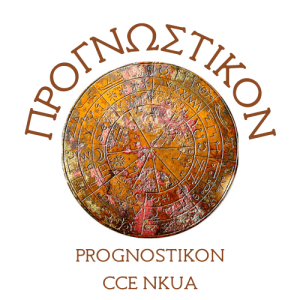Panos Xidonas
When I was completing my bachelor’s degree in physics, I approached one of the most renowned professors at the university with a question that had been on my mind for some time. What did he think about my plan to pursue a master’s degree in financial mathematics? His reaction was unexpectedly intense, being almost furious. He nearly threw me out of his office, declaring that physics was the most sacred of all disciplines — and that considering anything else was almost a betrayal.
That moment stayed with me. Not because it discouraged me — but because it made me realize something deeper: That there are unwritten boundaries in academia, invisible lines that define what is considered “pure” or “worthy.” And yet, real-world problems don’t respect those lines. They are messy, complex, and stubbornly interdisciplinary.
At the beginning of my academic career, this interdisciplinary path wasn’t always welcomed. Quite the opposite. I experienced a kind of academic bullying — subtle, but persistent. People would ask, sometimes with condescension: “So, what are you exactly? A physicist? An operations researcher? An economist?” Behind the question was a deeper skepticism: If you don’t fit into a single box, do you truly belong anywhere? It was, in a sense, a form of scientific prejudice. And it made clear that the path I had chosen was not pre-paved. It was a path I would have to carve out, perhaps to craft, myself — step by step, paper by paper, bridge by bridge.
Physics offered a foundation: A way of thinking rigorously, seeking underlying structures, and embracing complexity. But soon it became clear that solving practical problems — from economic uncertainty to financial decision-making — required more than elegant equations. It required tools from operations research, finance, data science, optimization, and increasingly, artificial intelligence.
The transition from physics to finance was not a fall from purity, as some might think — it was an expansion. As Emmanuel Derman aptly wrote in My Life as a Quant, “In physics, you’re playing against God; in finance, you’re playing against other people.” Physics strives for eternal truths, timeless laws that exist independently of us. Finance, by contrast, is shaped by human behavior — often irrational, reflexive, and influenced by the very models that try to describe it.
That paradox fascinated me. It demanded humility. In finance, unlike physics, models are not just maps of the territory — they can change the territory itself. A pricing model used widely enough can move markets; a risk model trusted too much can lead to collapse. And yet, the analytical mindset of physics proved invaluable in navigating this uncertainty.
Over the years, the journey became less about moving from one field to another and more about weaving them together. Not abandoning physics, but using its mindset to tackle new challenges. Not just studying finance, but enhancing it with algorithmic thinking. Not simply applying AI, but understanding its limits and how it can work collaboratively with human judgment.
This kind of work calls for more than technical skill. It demands fluency — the ability to “speak” across disciplines, to translate ideas from one domain to another, and to recognize when a method from physics might illuminate a financial question, or when an algorithm from AI might support a human-centered decision process.
The art of interdisciplinarity is not about being a generalist in the shallow sense, nor about abandoning depth. It’s about curiosity without borders. About respecting the purity of each discipline while daring to cross-pollinate their strengths. And above all, about realizing that complex challenges — especially those we face today in economics, technology, and policy — require hybrid thinking.
>Ironically, the very thing that provoked outrage in my professor’s office has become a source of purpose. Because in the end, science is not a religion — it is a toolset, a mindset, and above all, a search for truth. And sometimes, the truth lies not in any single discipline, but in the space between them.
And if the path isn’t there yet — then perhaps it’s worth creating it.



